Email marketing may not seem as sexy as some marketing channels. But when it comes to results, it leaves the rest in the dust
Research by McKinsey tells us email is 40 times better at acquiring new customers than Facebook or Twitter.
Once you’ve got customers buying from you, email is your best opportunity to increase their customer lifetime value. Customers who receive your emails spend 138% more, on average, than those who don’t subscribe.
There’s a tonne of clever stuff you can do with email. So much so, you’d never have time to do it all manually. This where email marketing automation comes in.
Automating your email campaigns allows you to get ahead of the competition, automatically. It frees your team from repetitive tasks and enables you to use intelligent personalization without breaking a sweat.
But which automated email campaigns should you start with? Here are ten campaigns you can easily implement to hit the ground running.
1. Welcome
A welcome campaign is an automated email series that gets triggered when a new subscriber signs up to your email list.
It’s your opportunity to introduce your brand in bite-sized chunks. Show new subscribers what you’re about, what they can buy from you, and why they’d want to.
Effective welcome campaigns tell a seductive story that persuades a subscriber to make their first purchase.
2. Introductory offer
Some subscribers are harder to convert than others.
Send an automated introductory offer to incentivize those that weren’t persuaded to purchase by your welcome campaign.
The bold design of this introductory offer from Bonobos attracts uncertain subscribers to click through and consider a purchase:
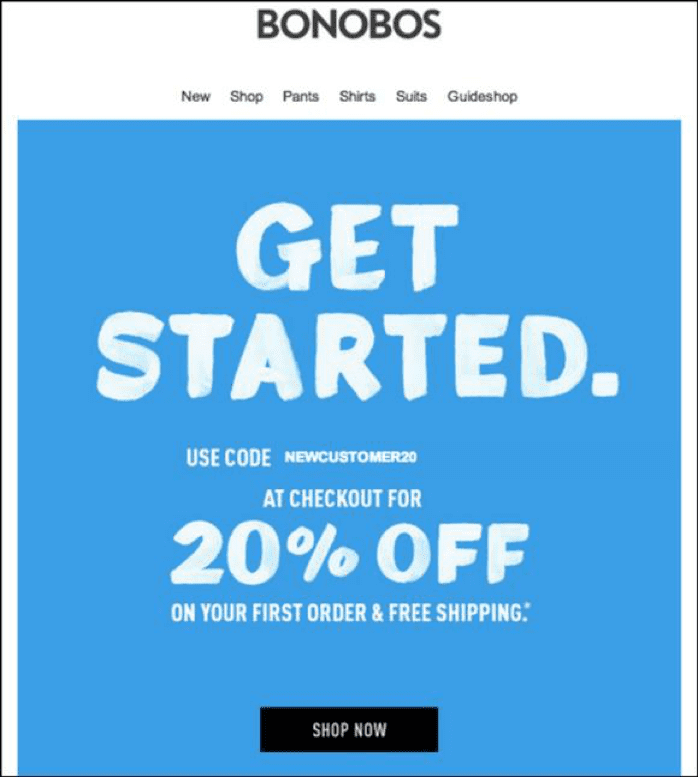
3. Thank you
Sending an order confirmation and shipping information is a must when someone has completed a purchase, but these emails don’t have to simply be functional.
Adding a thank you message to a fulfillment email is a great way to improve your customer experience and build rapport.
They are also a smart way to combat any potential buyer’s remorse, reassuring customers they made a wise choice.
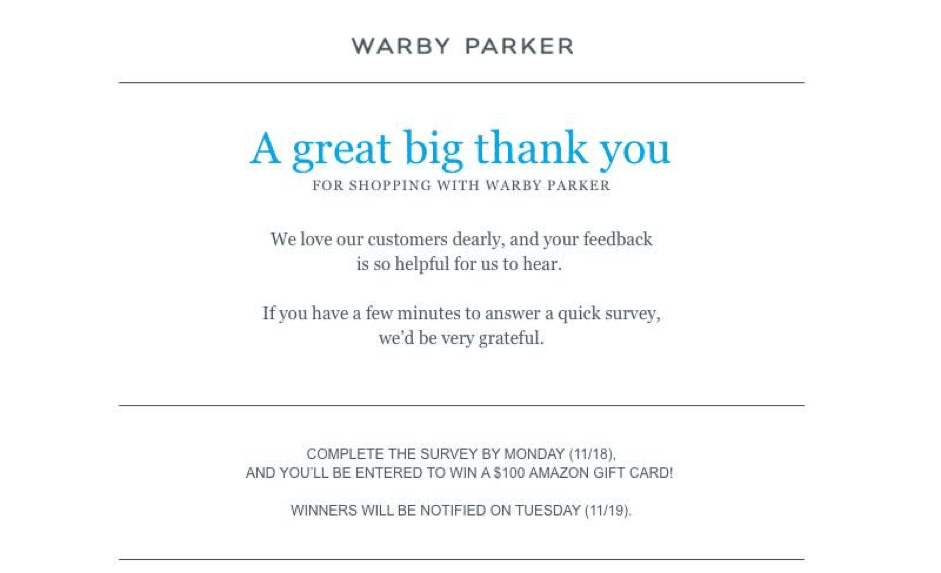
4. How to
Once your customers have received their new purchase, send them an automated email to show them how to get the most from it.
“How to” content is the best way to ensure your customers enjoy their purchase. After all, there’s nothing more frustrating than buying something but not being quite sure how to use it.
This automation is another post-purchase marketing tactic that helps combat buyer’s remorse.
Here’s a super visual example of a "how to" guide from Shuperb:
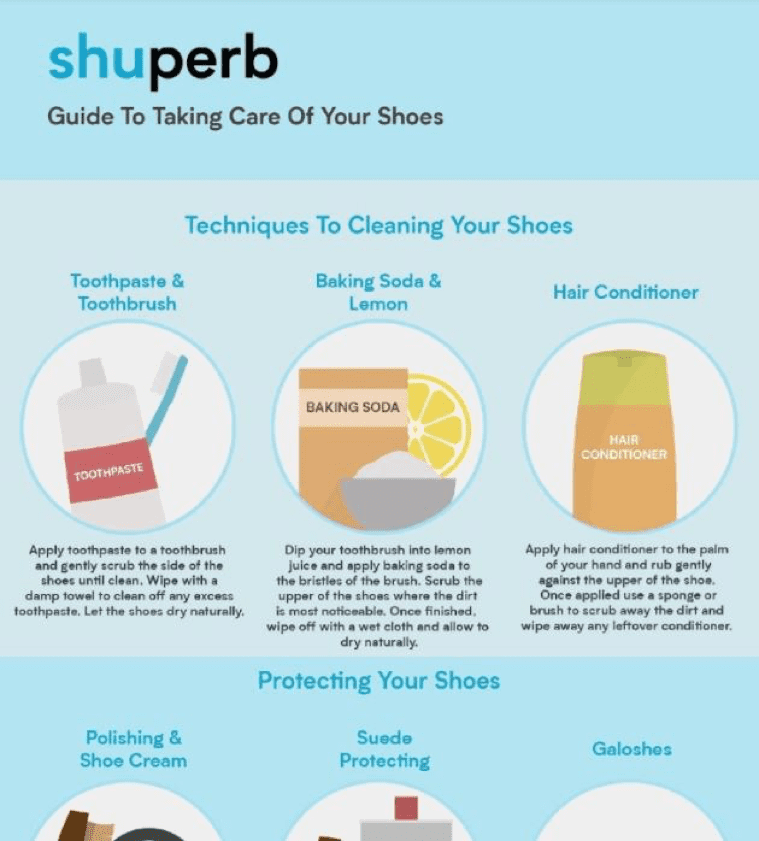
5. Feedback
Setting up an automated email that asks for feedback is a no-brainer. It’s important to time this right—your customer needs to have had a chance to use your product.
Not only does the act of asking for feedback create positive sentiment; the feedback itself helps you optimize your offering.
This feedback request from Sephora uses a playful tone-of-voice to entice a review of a purchase:
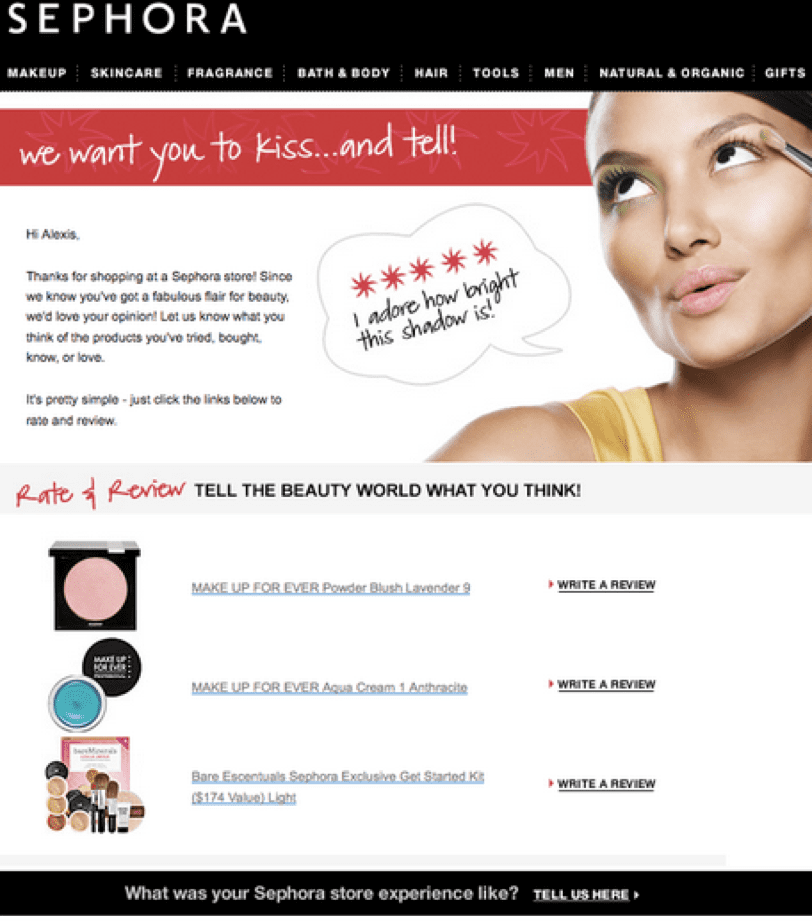
6. Product recommendation
Product recommendations are an eCommerce marketer’s secret weapon to pump up profits.
Automated emails that recommend products based on what customers have browsed or bought before is an effective way to cross-sell and upsell.
We love this example from Best Buy. It recommends products to accessorize the customer’s recent purchase (a new camera):
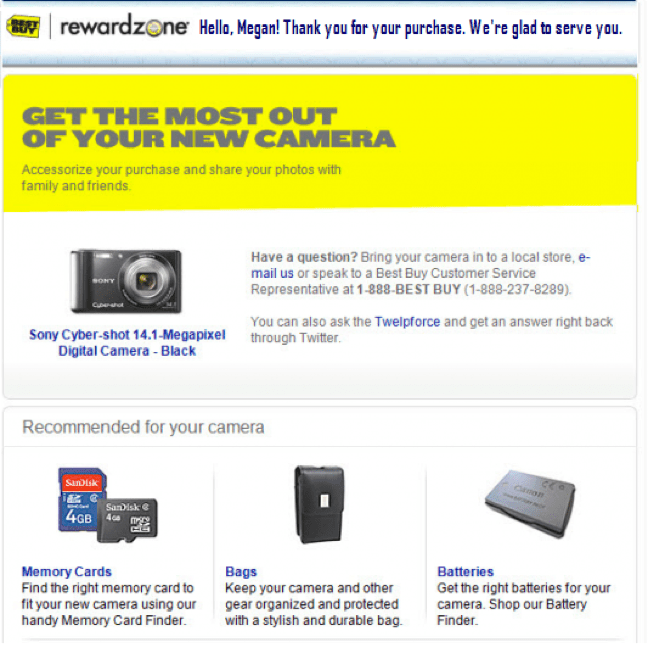
7. Browse and basket abandonment
As many as 69% of customers abandon products in their basket.
The idea of missing out all of those potential sales can be crushing. But it doesn’t have to be that way.
Entice customers back to buy with browse and basket abandonment emails. Abandonment emails has a big impact on revenue as it’s encouraging a purchase from people at the very bottom of the sales funnel. In fact, our own customers average 12% more online revenue when using our cart abandonment technology.
Here’s an eye-catching example from Topshop of this tactic in action.
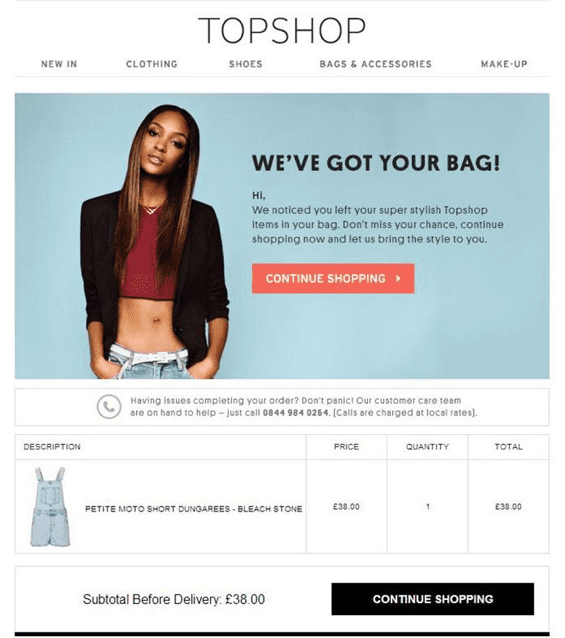
8. Sale countdown
Sale countdowns are the perfect email automation to create a sense of anticipation or urgency around your sale.
You could countdown to when the sale begins. Or, once the sale is on, count down the hours, minutes, and seconds left until customers miss out.
Countdown timers are a visually engaging element to add to these emails that are sure to grab your customer’s attention.
This winning example from Game shows how to use this feature to your advantage:
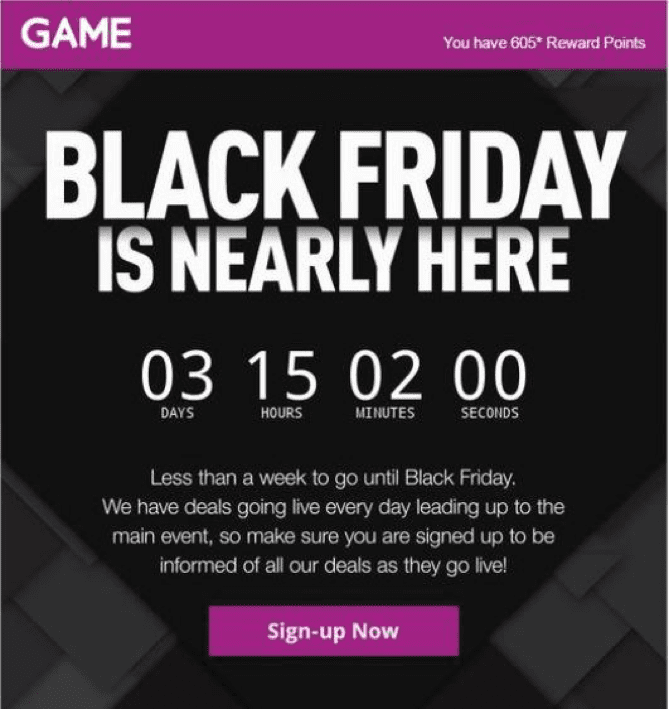
9. Replenishment
If you sell products that run out or have a certain shelf-life, automated replenishment emails should be your new best friend.
These handy reminders prompt your customers to top up on products just before they run out.
This makes repurchasing from you the most convenient option. In this way, you can cut down the chances they’ll be tempted to buy from your competitors.
Read Pure360's guide to learn how to replenishment emails can create consistent recurring revenue for retailers.
10. Re-engagement
Try as you might, there will always be some sleeping subscribers in your email list. Wake them up with a re-engagement email automation.
Set these up to be triggered once someone has failed to engage with a certain number of emails, depending on your frequency.
Discounts are a great way to re-engage people with your brand. Here’s a simple and effective example from Gap:
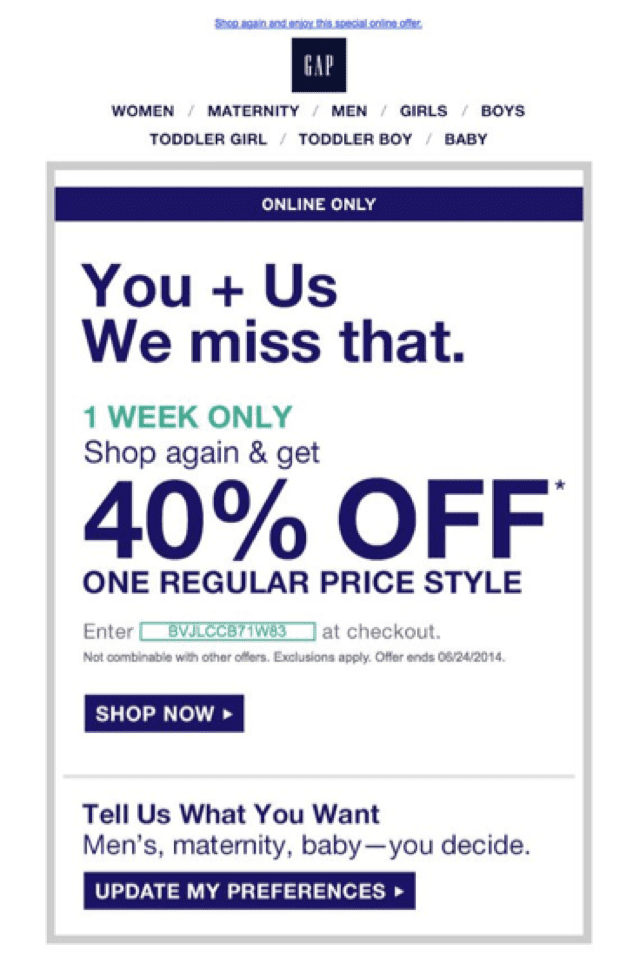
Takeaway
We hope our examples have inspired you to think about how marketing automation can add value to your customer journey.
Let us know how you get on. We’re always keen to hear about fellow marketer’s email marketing success! Give us a tweet @Pure360.
Thanks to Cara Wilson for sharing their advice and opinion in this post. Cara is Digital Marketing Manager at
Pure360. Pure360’s platform helps brands deliver personalized marketing across website and email.














